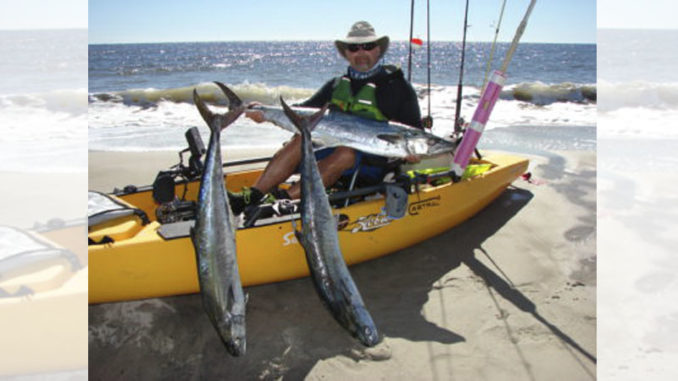
Oak Island’s nearshore bull reds and king mackerel give kayak-bound anglers a chance to shine in October.
The nearshore ocean off North Carolina’s Oak Island has attracted fish and fishermen for decades. It is one of only a few south-facing beaches along the coast of the Carolinas. And the unique westerly flow of water running out the Cape Fear River carries bait down the beach for a ways instead of sweeping it to the north like at most other inlets. This unique movement of water holds a variety of baitfish along the beaches. And big fish move in to enjoy the buffet.
Frying Pan Shoals to the east also blocks most northerly swells from reaching Oak Island, keeping the nearshore ocean calm — a trait that attracts plenty of fishermen. The fastest-growing group is kayak fishermen. They flock to the area in fall when big king mackerel and red drum arrive to feed on the abundant bait. And the calm waters provide ideal conditions for fishing from a kayak.
Kayak fishermen were first drawn to Oak Island for the spring and fall king runs. But over the past decade, the fall run of bull red drum has exploded. Hordes of kayak fishermen now descend on the nearshore waters to do battle with kings and bull reds.
Get a citation — the good kind
Bull reds longer than 40 inches are eligible for a N.C. Division of Marine Fisheries Outstanding Catch Citation. And most of the ones caught off Oak Island meet or exceed the minimum. They are caught from piers, from boats and occasionally by surf fishermen. But it’s the kayak fishery that’s exploded, in part because there are numerous public-access areas to launch from.
Jonathan Grady of Fayetteville, N.C., is one of the best of the kayak fishermen off Oak Island. He has built a reputation for catching big drum and king mackerel, especially in kayak fishing tournaments. His 38 ½-pound king is the unofficial state record for a kayak-caught king. And no one has touched his feat of catching and releasing a dozen citation-sized reds in a day. His truck — with empty kayak racks — can be found parked at the SE 49th St. Beach Access most fall weekends and on all his days off.
“My day begins with catching bait,” Grady said. “I like to use fresh bait, even if I’m fishing it dead. There is a great fall mullet run along the beach, and they are usually within cast-net range, especially around high tide. I like to catch several dozen before launching my kayak, and then head out to 10 to 15 feet of water to find a school of pogies (aka menhaden).”
Catching bait for kayak anglers
Grady said some fishermen catch menhaden in cast nets. But it’s difficult to throw a large, heavy cast net from a kayak, so he uses a snag rig, which starts with several feet of 30-pound mono leader with a weighted metal jig at the end. There are several loops fitted with treble hooks in the 2 feet right above the jig. They snag menhaden when they are bunched in a school. And the jig will draw strikes from bluefish and Spanish mackerel. Grady said live bluefish are better baits for kings, but drum will hit them, too.
“I use a two-hook wire leader, just like I use on my boat, for kings,” Grady said. “I like to use a live bluefish or pogey for bait and slowly work my way around bait balls or over structure. There are usually bait balls to be found, plus, there is broken hardbottom scattered throughout this area, and Yaupon Reef (AR 425) is only about a mile-and-a-half offshore.
“I sometimes catch big drum while fishing for kings, but I target them differently so I don’t have remove treble hooks before releasing them,” Grady said. “I fish for big drum using a heavy duty Carolina rig with a short leader and circle hook. This prevents deep-hooking and makes them easier to release.”
Drifting covers more water, more quickly
Grady said his favorite drum bait is the head or body of a large menhaden. He fishes it on the bottom and drifts slowly, rather than anchoring, to cover more area. Menhaden are oily fish, and the oil spreads their scent through the water, which helps attract fish. Smaller fish are constantly pecking on the baits, and this helps spread the scent, too.
Mark Patterson of Greensboro, N.C., the founder of the North Carolina Kayak Fishing Association and operator of Brigadoon Guide Service, dedicates two weeks and multiple weekends to chase kings and bull reds off Oak Island. He once caught a daily limit of three kings from his kayak.
Patterson uses a wire king rig with a pair of treble hooks, but with a shorter piece of wire between the nose hook and swivel. He said the shorter wire allows the bait to swim better, is more difficult for the fish to see and makes the rig easier to handle in a kayak. Patterson also uses a heavier Carolina rig to target red drum. He uses live pogies, bluefish or mullet on all rigs, with dead whole baits as his second choice and pieces of dead baits as his third option for big redfish.
Another technique that has produced is fishing a bait or soft plastic suspended under a popping cork, first popularized in the shallow waters of the Pamlico Sound and Neuse River. It works well in the ocean, too. A large popping cork, like the Cajun Thunder Magnum, makes a big splash and a loud sound that carries through the water and helps attract fish. Live or dead baits and larger soft plastics are fished on circle hooks suspended 2 to 3 feet under the cork.
Catching big fish from a kayak is a blast
Grady and Patterson said kings and big reds are more fun to catch from a kayak than any other way. Both will take you for a ride, but the runs are different. A king usually makes a hard run, long and straight. Big red drum also make hard runs, but they are shorter, and they usually turn and run around the boat. While a king strike usually results in a bit of an Oak Island sleigh ride, a bull red strike is often more like a ride on a Tilt-A-Whirl at the county fair. It goes around one way for a turn or two and then switches direction.
Other areas in the Carolinas hold kings and reds in the fall, but Oak Island is laid out almost as if intended for kayak fishermen, with numerous public access areas and fish only a few hundred yards offshore. The NCKFA holds its annual Oak Island Fall Classic the second week of October (Oct. 12-14 this year); it includes a tournament for inshore species and one for ocean species.
DESTINATION INFORMATION
HOW TO GET THERE — Oak Island is in Brunswick County, at the mouth of the Cape Fear River, at the terminus of NC 87, NC 133, NC 211 and NC 906, most of which can be accessed from US 74, I-85, I-95 or US 17. Oak Island has numerous public-access points for kayaks, some with handicapped matting on walkways that helps kayak carts roll across the soft sand. The access at SE 49th Street across from Oak Island Skate Park is the most popular.
WHEN TO GO — The best king mackerel fishing is in the fall, with fish arriving in late September and staying into the third or fourth week of October, depending on water temperature and food availability. Red drum show in numbers in late August or early September, with the action peaking in October. Fishermen can keep three kings per day, with a 24-inch size minimum. One red drum can be kept per day, but it must be between 18 and 27 inches; most Oak Island fall reds are larger.
How it’s done, where to stay, who to go with
BEST TECHNIQUES — Most fishermen use medium to heavy spinning tackle so they can easily cast into schools of bait, but conventional gear also works well for those who can cast it or just want to troll. Kings make long runs, so a reel that holds at least 350 yards of line is needed. Monofilament or a minimum of 100 yards of a mono top shot are preferred, and 20-pound test is plenty heavy for kings. Big drum typically don’t make runs as long as kings, and when targeting them, heavier line is better, as it allows using more drag to get the fish in more quickly. Braided line works well on big drum. Live menhaden, mullet and bluefish are the preferred baits for kings; big drum will hit them, too.
FISHING INFO/GUIDES — Jonathan Grady, Yak’n Off Outdoors Guide Service, 910-818-0587; Mark Patterson, Brigadoon Guide Service, 336-210-9861; Wildlife Bait and Tackle, 910-457-9903; Dutchman Creek Bait and Tackle, 910-457-1221, www.dutchmancreekbaitandtackle.com; Oak Island Sporting Goods, 910-278-9872, www.oakislandsportinggoods.com; and The Tackle Box, 910- 363-4891, www.facebook.com/tacklebox910. See also Guides and Charters in Classifieds.
ACCOMMODATIONS — Ocean Crest Motel, 910-278-333, www.oceancrestmotel.com; Island Resort and Inn, 910-278-1604, www.islandresortandinn.com; Holiday Inn Express and Suites, 910-253-9100, www.ihg.com; Southport Angler Outfitters, 910-457-7096, www.southportlodging.com; Southport-Oak Island Chamber of Commerce, 800-457-6964, www.southport-oakisland.com.
MAPS — Capt. Segull’s Nautical Charts, 888-473-4855, www.captainsegullcharts.com; Sealake Fishing Guides, 800-411-0185, www.thegoodspots.com; Maps Unique, 910-458-9923, www.mapsunique.com; Grease Chart, 800-326-3567, www.greasechart.com; GMCO’s Chartbook of North Carolina, 888-420-6277, www.gmcomaps.com.

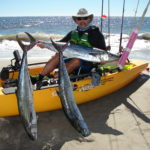
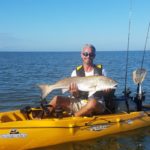
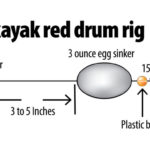
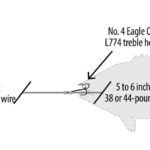
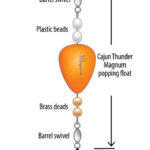
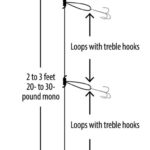




Be the first to comment